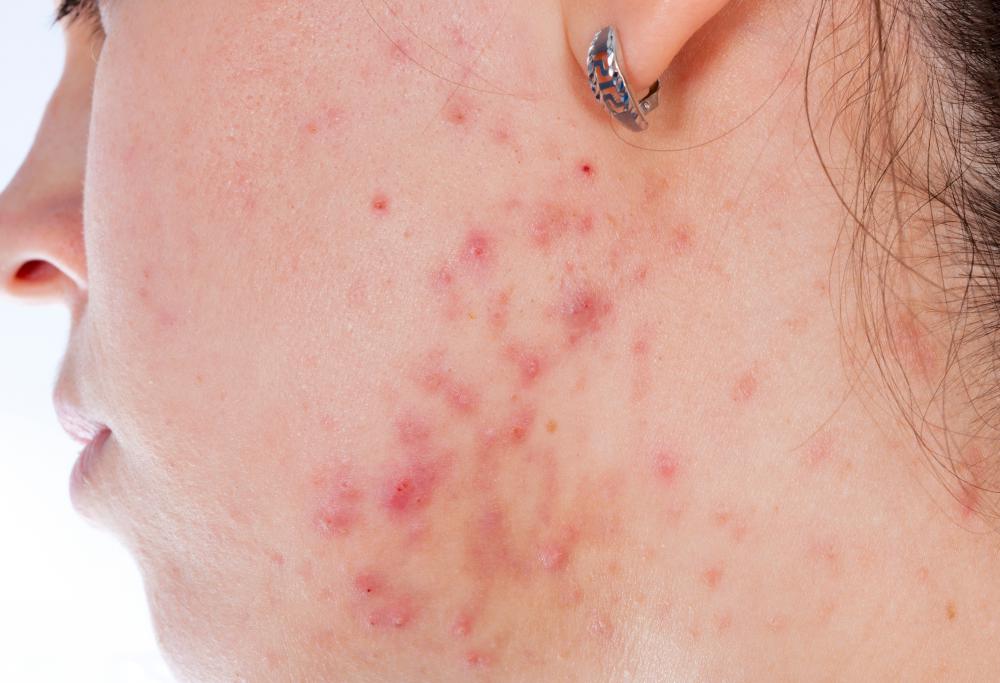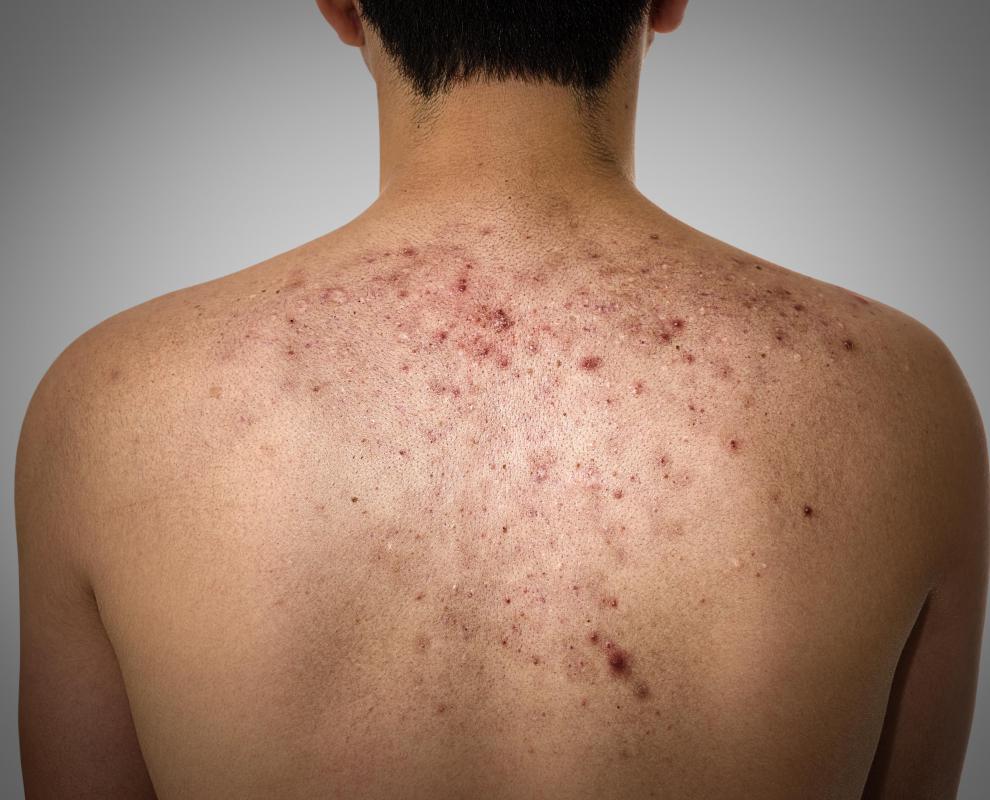At WiseGEEK, we're committed to delivering accurate, trustworthy information. Our expert-authored content is rigorously fact-checked and sourced from credible authorities. Discover how we uphold the highest standards in providing you with reliable knowledge.
How Do I Use Coconut Oil for Acne?
Most people who use coconut oil for acne treatment and prevention either apply it topically or ingest it. Some people apply the oil directly to the areas affected by acne, and others soak in baths of coconut oil mixed with warm water. If you choose to ingest the oil, follow the instructions on the packaging. Since coconut oil can cause negative health side effects, it’s best to talk with a doctor before choosing to use it internally rather than topically. Like most types of acne treatments, coconut oil works well for some and not well for others.
Generally, people with acne problems on their facial skin apply coconut oil directly to the affected areas. Using the steam of a hot bath or shower can open your pores and help the coconut oil, and its antibacterial properties, better penetrate your skin. Some people add salt to the oil to exfoliate the skin. Most people apply coconut oil for acne problems at night, before they go to bed. This helps keep their skin from appearing greasy or shiny throughout the day.

Yet, if you have acne on your chest, shoulders, and back, you might find it simpler to add the coconut oil to your bath water. Fill your bathtub with water warm enough to open your pores, and add a few tablespoons of coconut oil to the bath. Some people find adding it to the water stream helps evenly distribute the oil throughout the bath. Soak in the water for at least 15 minutes. After your bath, make sure any lotions or creams you use are noncomedogenic.

If you’d rather ingest coconut oil for acne treatment and prevention, make sure you read the accompanying directions. Typically, most manufacturers advise ingesting one to four tablespoons, or about 0.5 to 2 fluid ounces, of coconut oil per day by itself or with another food source such in a smoothie. Note that due to some of the adverse side effects coconut oil can cause, it’s best to consult a physician before you begin ingesting it to treat acne. Coconut oil is high in calories and, depending on the amount you ingest, can provide the recommended daily intake of fat all by itself. Some people experience nausea and vomiting, increased cholesterol, and increased arterial fat.

Many people report additional skin benefits while using coconut oil for acne problems. For example, in addition to treating acne and skin inflammation, coconut oil can make skin softer and smoother. Some people describe their skin as “glowing” after using the oil. Coconut oil acts like a moisturizer, so most people do not experience the kind of dry, flaky skin other acne treatment products produce.

Still, coconut oil is not a successful means of treating acne for everyone. Some people report new or worsening acne breakouts while using the oil. Others experience additional skin problems, such as the appearance of whiteheads and blackheads. Though, not all cons are related to acne or the user’s skin. For example, some people can’t tolerate the smell of coconuts or complain the oil leaves their bed sheets greasy, and therefore avoid trying or continuing coconut oil for acne treatment.
AS FEATURED ON:
AS FEATURED ON:

















Discussion Comments
Drentel - I sometimes use coconut oil in my coffee and tea. I have also used it in some foods. The key is to watch the amount you take in because too much of the oil can lead to other issues.
However, a little in a hot beverage works well for me.
Sporkasia - Have you ever tried taking the coconut oil through your mouth? Seems like that might be an even better way to get the product directly to the source.
Coconut oil works best for me when I add a bit to hot bath water. Like the article said, the hot water and steam open my pores and then the oil is better able to get into the skin. I also think breathing in the steam rising from the water-oil mixture helps even more.
I tried rubbing coconut oil on my skin, but mostly I just got oily acne. Rubbing on the oil may work for some people, but not for me.
Post your comments